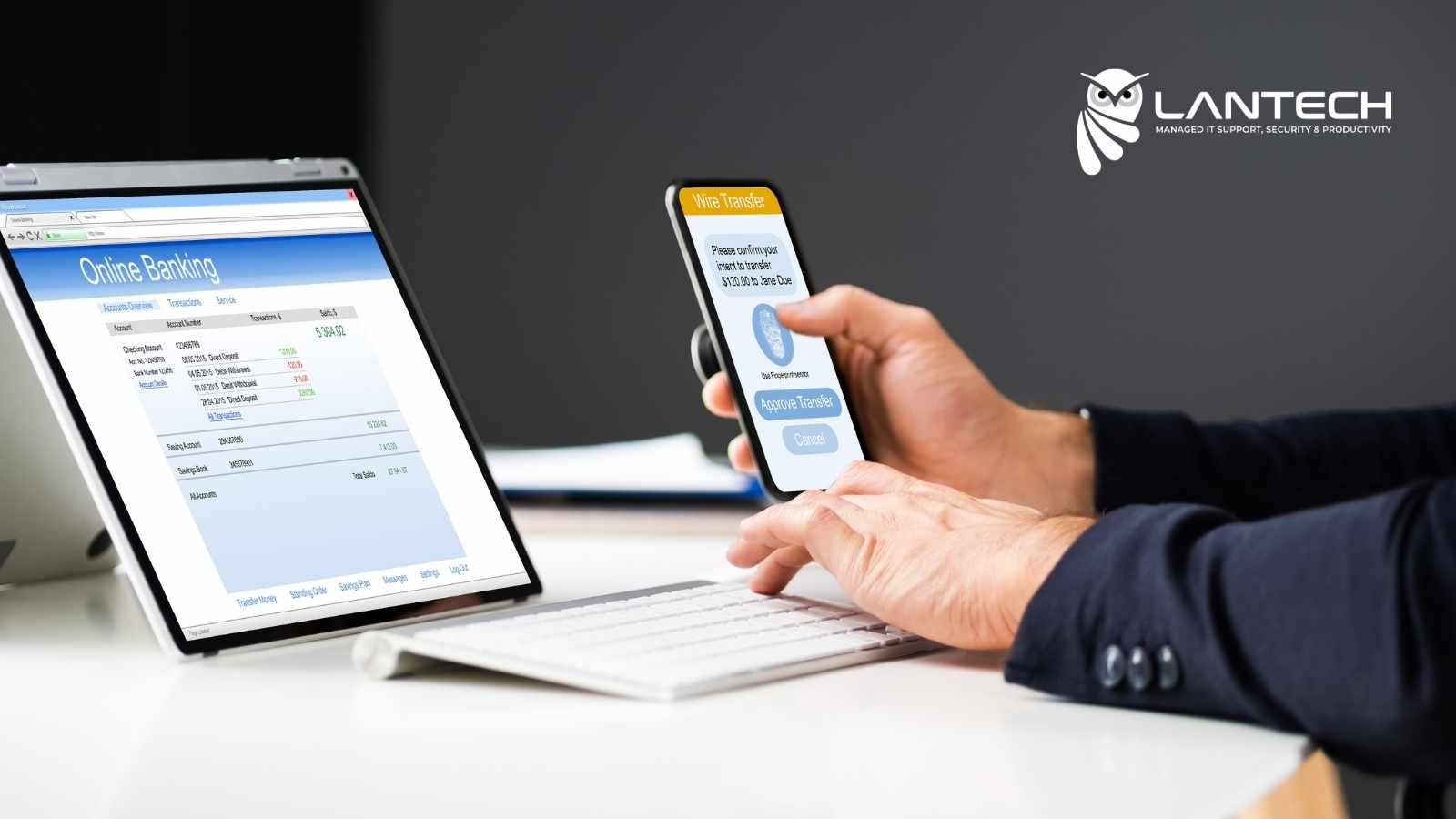Two-factor authentication and multi-factor authentication are essentially the same in that there is a requirement to use more than one factor for authentication. The subtle difference is that multi-factor authentication is not limited to two, as it can use a third factor for authentication.
I bet you have reused a password. In fact, you may use the same password for multiple accounts. If you do, then you're not alone. According to a Google Survey, at least 65% of people reuse passwords for numerous websites.
Unfortunately, all it takes is one cracked password for cybercriminals to hack your other online accounts. This is where multi-factor authentication (MFA) comes into play to provide your accounts with additional security against these threats.
MFA requires an extra step to verify your identity, which greatly limits the chance of your account becoming the victim of a hacker.
Here at Lantech, we believe MFA is critical for every business, and it's something we're uncompromising about. So why is MFA an essential part of a good cybersecurity policy?
Ultimately, requiring MFA for all of your business accounts gives you much-needed protection by making it much more challenging for cybercriminals to hack into these accounts.
The Reality of Poor Password Hygiene
Many people make the mistake of creating simple passwords that are easy to remember. While simple passwords are always convenient, they also greatly increase the likelihood of your account being hacked.
Taking an additional step by enabling either two-factor or multi-factor authentication will give your account much greater security.
What is 2FA/MFA?
Two-factor authentication and multi-factor authentication both play a key role in giving your account additional protection from hackers. Both of these methods require a user to verify their identity through different verification factors.
For example, you may need to verify your identity by entering a one-time code sent to your mobile device or email address. This added layer of defence helps to keep your account much more secure.
MFA Best Practices for Companies
Learning the best practices for MFA is key for small businesses.
-
Enabling MFA with at least two or more verification factors for each employee account is a great way to improve security.
-
Creating a conditional access policy also allows you to require MFA for every account.
-
Using single sign-on reduces the number of individual authentication systems, which saves time and is more convenient for your employees.
What Comes Next after 2FA/MFA?
Implementing two-factor authentication or multi-factor authentication is just one aspect of cyber security.
Your business still needs to have a cyber security strategy, and partnering with a Managed Services Provider for your IT Support is key to giving you the best protection.
An IT service provider will work with you in successfully transforming your cyber resilience through the People, Process, Technology (PPT) framework to ensure you are well-prepared for all of the challenges in the modern workplace.
Schedule a free cyber security review for your business today, Book a Meeting to learn more.


